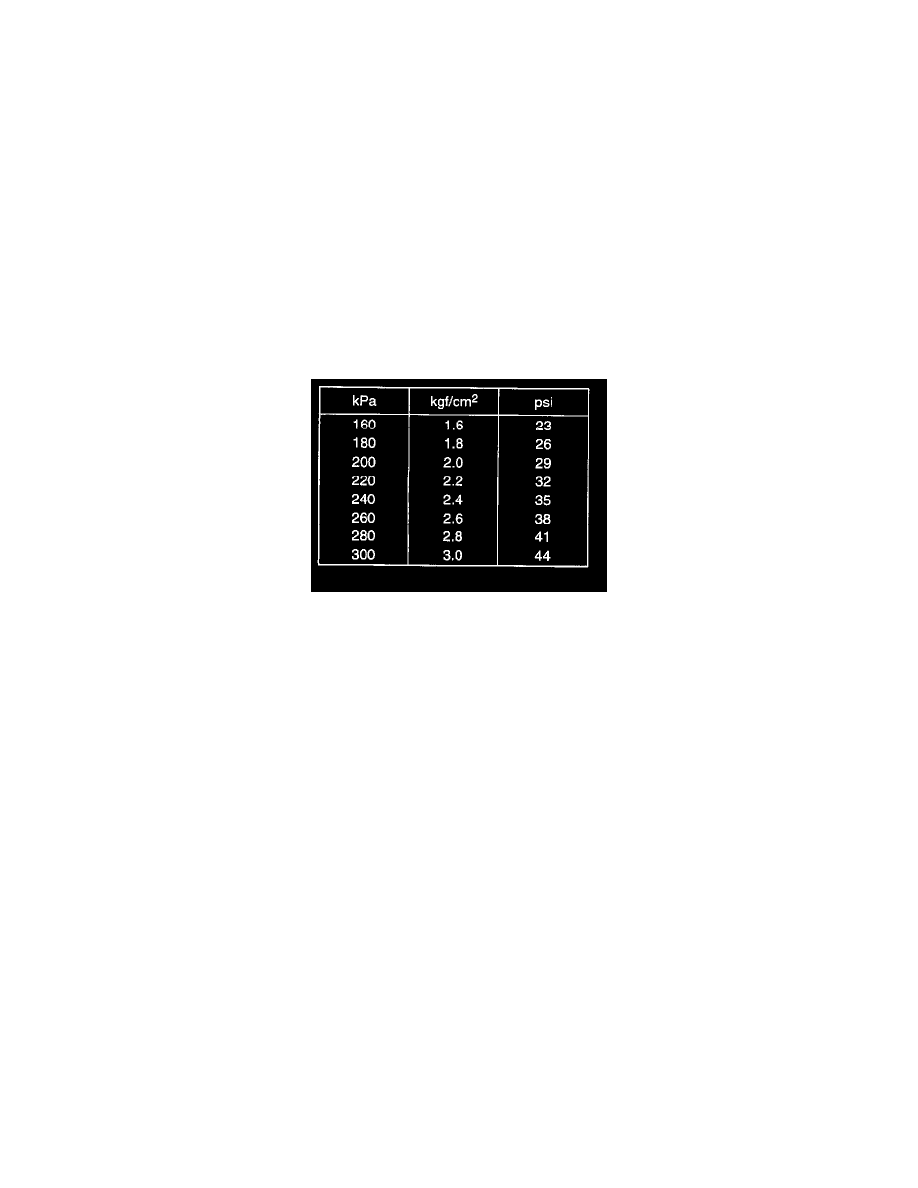Esteem GLX Wagon L4-1.8L (1999)

Tires: Description and Operation
TIRES
This vehicle is equipped with either tire of followings, depending on vehicle specification.
P185/60 R14 or P175/70 R13
The tire is of tubeless type. The tire is designed to operate satisfactorily with loads up to the full rated load capacity when inflated to the recommended
inflation pressures.
Correct tire pressures and driving habits have an important influence on tire life. Heavy cornering, excessively rapid acceleration, and unnecessary
sharp braking increase tire wear.
TIRES REPLACEMENT
When replacement is necessary, the original equipment type tire should be used. Refer to the Tire Placard. Replacement tires should be of the same
size, load range and construction as those originally on the vehicle. Use of any other size or type tire may affect ride, handling, speedometer/odometer
calibration, vehicle ground clearance and tire or snow chain clearance to the body and chassis.
WARNING: Do not mix different types of tires on the same vehicle such as radial, bias and bias-belted tires except in emergencies, because
handling may be seriously affected and may result in loss of control.
It is recommended that new tires be installed in pairs on the same axle. If necessary to replace only one tire, it should be paired with the tire having the
most tread, to equalize braking traction.
The metric term for tire inflation pressure is the kilopascal (kPa). Tire pressures is usually printed in both kPa and psi on the Tire Placard.
Metric tire gauges are available from tool suppliers.
The chart shown converts commonly used inflation pressures from kPa to psi.
